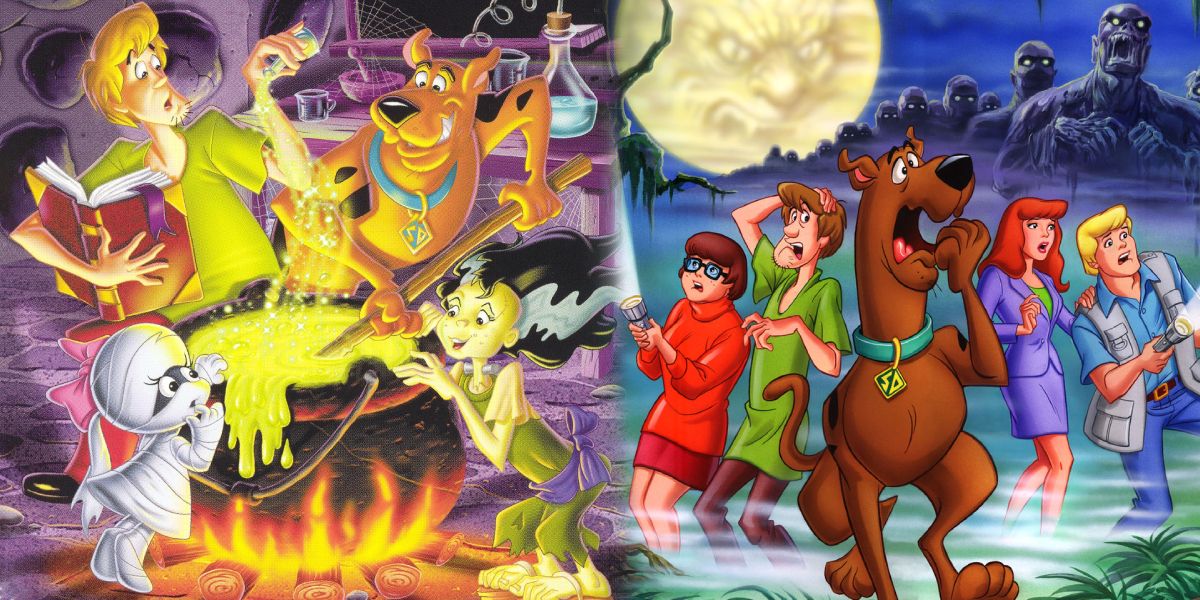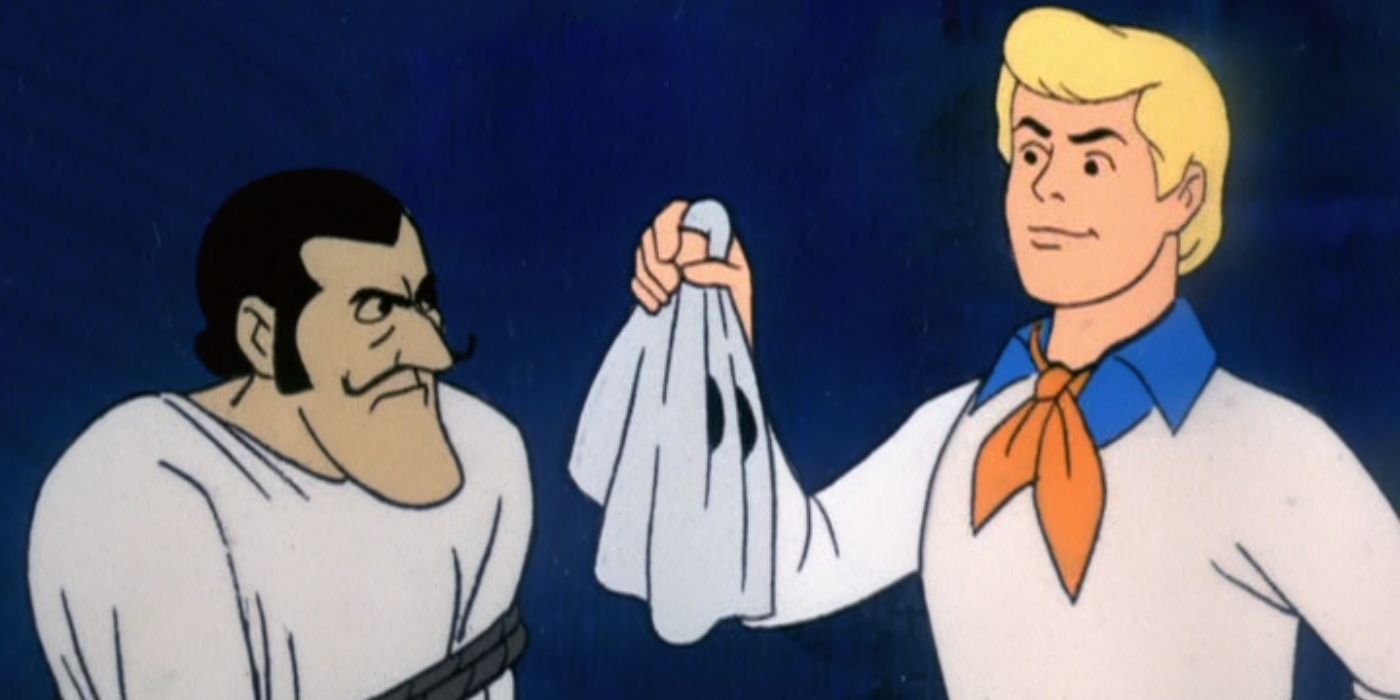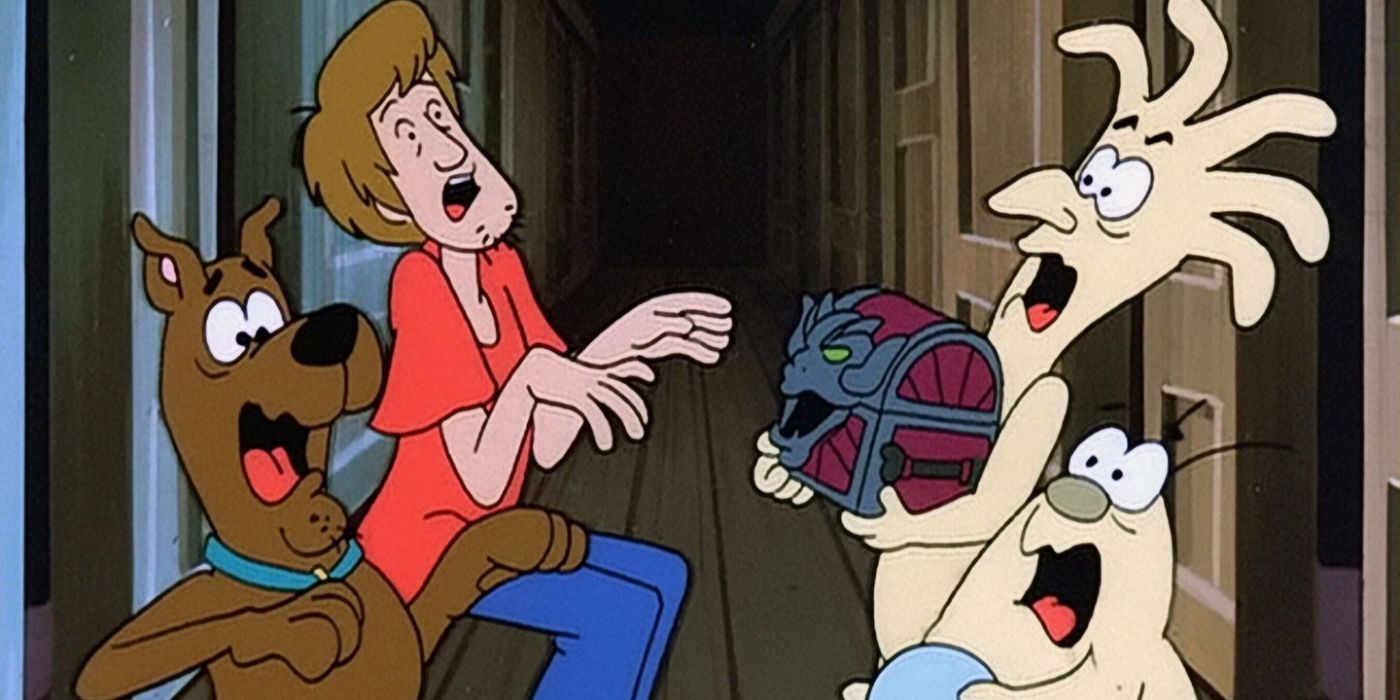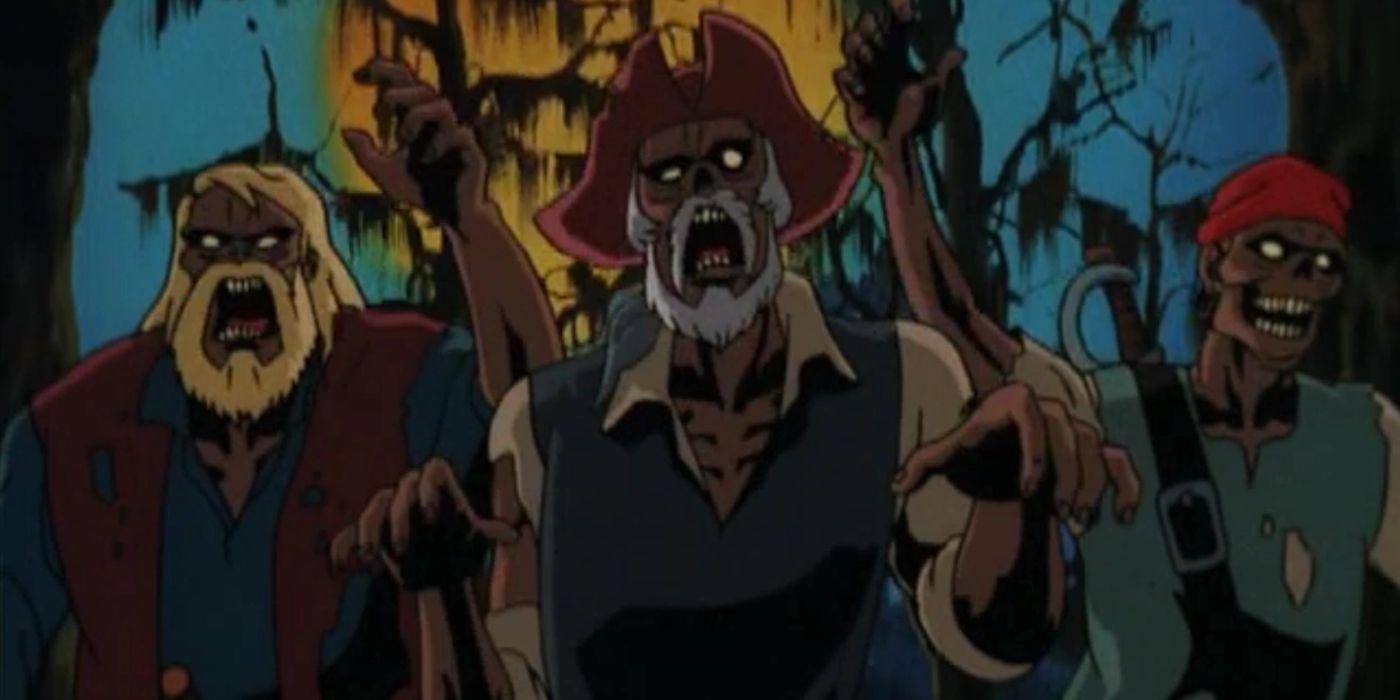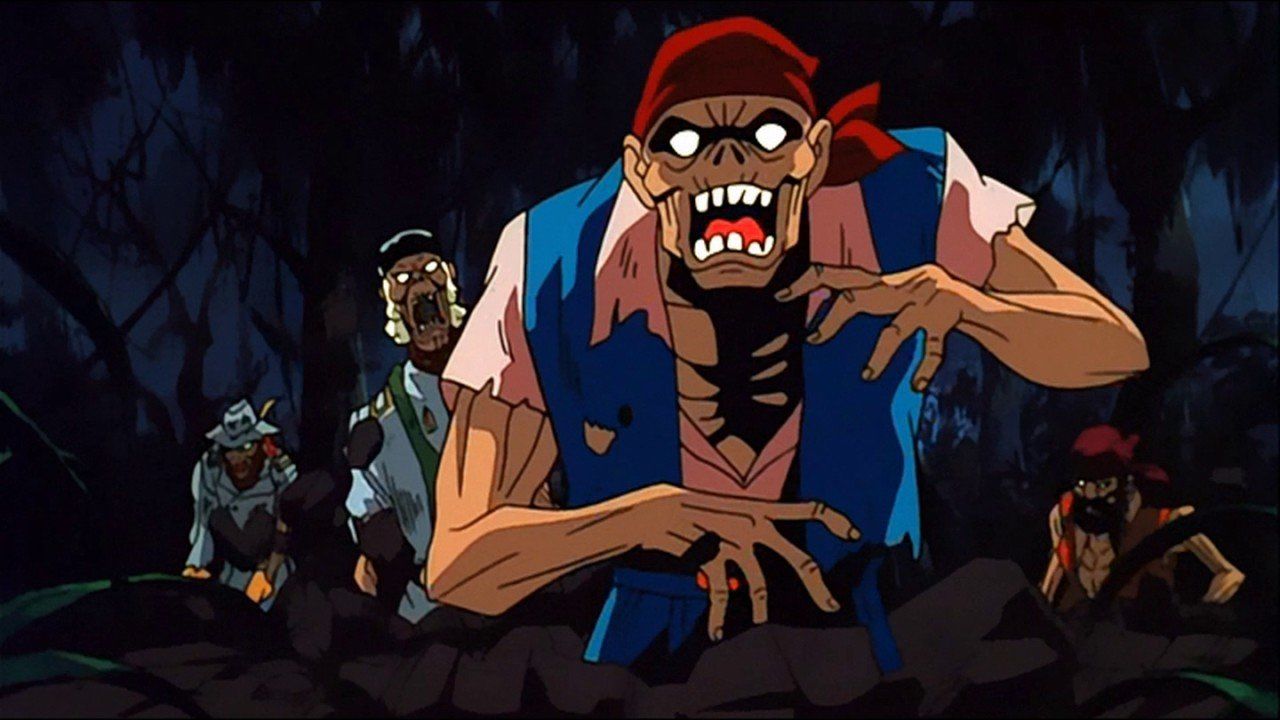Ever since the premiere of Scooby-Doo, Where Are You! in the fall of 1969, the Scooby-Doo franchise has become a pop culture institution. Over the past five decades, the Mystery Inc. gang of Fred, Daphne, Velma, Shaggy and Scooby have gone on to appear in countless shows, movies, comic books and video games.
While it may seem like a supernatural cartoon on the surface, the crux of the original Scooby-Doo television series -- as well as many subsequent incarnations -- is that monsters and ghosts are not real. Rather, the creature of the week is always revealed as either a criminal in a costume or an illusion created with smoke and mirrors. Essentially, Mystery Inc. represents the skeptical youth, who unmask villains that are preying on the superstitions of the older generation.
That being said, the Scooby-Doo franchise did eventually start to implement explicitly supernatural elements into its stories. This trend can arguably be traced back to The New Scooby-Doo Movies' crossovers with shows like Jeannie and The Addams Family in the 1970s, and can even be seen as recently as the live-action Scooby-Doo films in the 2000s and the popular animated series Scooby-Doo! Mystery Incorporated in the 2010s, the latter of which even implemented some Lovecraftian elements.
However, by far the two most pivotal eras in this shift were the mid-1980s and the late-1990s -- which had drastically different interpretations of what real ghosts, ghouls and monsters are like in the Scooby-Doo universe.
The 1980s: Real Monsters Played for Comedy
The Scooby-Doo franchise underwent a significant status quo shift in 1985 with the premiere of The 13 Ghosts of Scooby-Doo. Fred and Velma were nowhere to be seen in this series, which instead focused on the team of Scooby, Shaggy, Daphne, Scrappy-Doo and newcomer Flim-Flam.
The series follows the new gang as they attempt to recapture 13 ghosts that Shaggy and Scooby were tricked into setting free, getting some help along the way from Flim-Flam's friend Vincent Van Ghoul, a warlock voiced by the legendary Vincent Price. Despite now featuring real ghosts, demons and magic, 13 Ghosts stayed true to the comedy-oriented, Saturday morning shenanigans viewers had come to expect from Scooby-Doo. The show was infamously canceled after 13 episodes, with only 12 of the ghosts captured. However, fans eventually got some closure thanks to the 2019 animated film Scooby-Doo and the Curse of the 13th Ghost.
Scooby's supernatural adventures picked up in 1987 with the TV premiere of Scooby-Doo Meets the Boo Brothers, the franchise's first full-length movie. It was followed by two sequels, Scooby-Doo and the Ghoul School and Scooby-Doo and the Reluctant Werewolf, both of which released in 1988.
These films focus exclusively on Shaggy, Scooby and Scrappy, with Daphne and Flim-Flam now out of the picture as well -- though Reluctant Werewolf features a new main character, Googie, in her first and only appearance. Still, they are similar to 13 Ghosts in that while they do feature genuine supernatural threats, the comedy is still the focus.
There are still villains and precarious situations to overcome, of course, but most of the entertainment comes from watching the bumbling antics of the ghostly Boo Brothers, werewolf Shaggy competing in a Wacky Races-esque rally, or Scooby and Shaggy training the students of Miss Grimwood's Finishing School for Girls -- who just happen to be the daughters of famous monsters -- for their annual volleyball game against the local military academy. All and all, this era was just a lot of fun.
The 1990s: Real Monsters Played for Drama
In 1998, the Scooby-Doo franchise launched a new animated film chronology with Scooby-Doo on Zombie Island -- and this time around, it wasn't taking any prisoners with its take on the supernatural.
Zombie Island is definitely one of the darker Scooby-Doo projects we've seen, complete with a more washed-out color palette. It's still made for kids and there are still plenty of laughs to be had, but it's definitely got an edge to it, and certain moments are legitimately scary as far as kids movies go.
Fred ripped a real zombie's head off believing it to be a mask, which shattered his entire worldview in an instant in a morbidly hilarious way. And let's not forget the villainous, voodoo-practicing werecats, whose backstory involves watching their fellow settlers getting chased into the bayou by pirates and subsequently being eaten alive by alligators. Combine that with an alternative rock soundtrack courtesy of Skycycle and Third Eye Blind, and this definitely wasn't your dad's Scooby-Doo.
The Zombie Island chronology continued with 1999's Scooby-Doo and the Witch's Ghost, which carries a very similar tone. The film implements a bait-and-switch technique, with the villainous "Ghost of Sarah Ravencroft" being revealed as a fake created to attract tourists. It's also implied that the popular band the Hex Girls might actually be real witches, though this is merely a misdirect on the film's part. However, things take a turn when the warlock Ben Ravencroft unleashes his ancestor's actual ghost -- which is far more dangerous than the fake could ever hope to be -- once again placing Mystery Inc. in genuine peril.
This trend bled over into the new millennium with 2000's Scooby-Doo and the Alien Invaders, which went in a more sci-fi direction. This film turns the bait-and-switch on its head, revealing the supernatural beings to be friends, not enemies. In Alien Invaders, the villainous aliens being pursued by Mystery Inc. are ultimately outed as fakes, while Crystal and Amber -- Shaggy and Scooby's respective love interests -- turn out to be real aliens in disguise, culminating in an emotional farewell as they return to their home planet.
The last major animated movie featuring a real monster released during this era was 2001's Scooby-Doo and the Cyber Chase. This film is a noticeable departure from the first three entries in the chronology, as it's far less overtly sinister in its tone and aesthetic. Furthermore, the villainous Phantom Virus -- while a living, breathing monster – is a man-made entity, as opposed to the zombies, werecats, witches, ghosts and aliens seen in previous films.
In its following entry -- 2003's Scooby-Doo and the Legend of the Vampire -- the animated film series returned to the franchise's roots of featuring only fabricated villains, leaving the live-action films to try their hand at real monsters. An animated Scooby-Doo film would not feature legitimate supernatural elements again until 2008's Scooby-Doo and the Goblin King.

